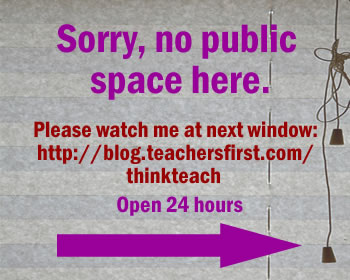A Teacher’s Rear View Mirror
Today a man I respect and enjoy is retiring from his role as a teacher and a teacher-of-teachers. He isn’t really retiring; he’s just going from full time work to part time work and selecting the projects he WANTS to work on. Jim Gates describes himself as a very “lucky man.” This news made me stop to think about the last two and half years since I left teaching (and teaching teachers) in a school district and moved to my current job at TeachersFirst. There are so many things that I did not expect to find in moving out of “school world” and into “school fringe/non-profitland.” Below are my top ten unexpected differences between my life as a teacher and my new professional life. Since Jim has been working in an intermediate unit (something like a BOCES or school service agency), and not as close to actual classrooms, he may not be as struck by these…especially since he will not be a full time employee elsewhere. But I suspect he will find some of them to be true, as well.
The Top Ten Realizations for a Teacher looking back:
10. No one likes hearing a teacher’s stories of an amazing unit or an incredible kid. When they say, “you had to be there,” they mean it. You’ll have to talk to another (or former) teacher to find a sympathetic ear and share that laugh.
9. It is nice to have the excuse of standing up all day so you can wear comfortable shoes and ignore fashion. Dressy shoes hurt. (Telecommuting from a home office helps!)
8. If you liked teaching, you will always like talking to teachers. If you don’t see them, you will answer their webmaster emails just to hear their delight at having someone listen.
7. People start more slowly in offices. They are not on hall-duty with 900 middle schoolers shoving past them three minutes after they hang up their coat (at 7:15 a.m.).
6. Having routines and schedules for every day can be a very difficult pattern to break. After schedules and patterns for 27 years, deciding what to do first, second, third, can be both delightful and exhausting.
5. Corollary to #6: Creating routines, patterns, and “plans” for the day generates rigidity that others do not understand or appreciate. Give it up.
4. The work year in the “real world” has no start and end. All the things I did before ended in June (even if they were not “done”), and new things started in August. It is much harder to work without an automatic refresh-and-renew cycle.
3. (Corollary to #4) January does not automatically begin discussion of “next year,” allowing you to skip changing anything between February and May.
2. People (i.e. outside school) in the world do work ten hour + days. Sorry guys, but teachers are not the only workaholics.
1. Nothing replaces experiencing kids’ reactions. Nothing.





